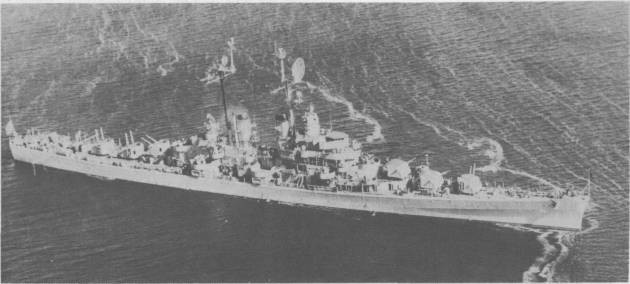Spokane (CL-120)

(CL-120: dp. 6,000; l. 541'; b. 53'2"; dr. 25'11"; s. 31.8 k.; cpl. 801; a, 12 5", 28 40mm.; cl. Juneau)
A city on a river of the same name in the eastern part of the state of Washington. The word Spokane, which is also the name of a county, a waterfall and an Indian tribe, all of the state of Washington, means "children of the sun."
Light cruiser Spokane (CL-97) was renamed Flint (q.v.) on 26 November 1942.
Spokane (CL-120) was laid down on 15 November 1944 by the Federal Shipbuilding and Drydock Co., Kearny, N.J.; launched on 22 September 1945; sponsored by Miss Patrice Munsel; and commissioned on 17 May 1946, Capt. L. E. Crist in command.
Spokane shifted to Bayonne, N.J., and then to Brooklyn, N.Y., whence she sailed on 24 June for Guantanamo Bay, Cuba, for her shakedown cruise and to conduct battle practice and weapons firing. She returned to New York on 11 September. The cruiser was assigned to the 2d Fleet for duty in European waters and sailed for Plymouth, England, on 7 October.
Spokane operated out of British ports until mid-January 1947. During her tour, she visited Scotland, Ireland, Norway, and Denmark. On 27 January, she stood out of Plymouth and proceeded to the United States via Portugal, Gibraltar, and Guantanamo Bay where she participated in fleet exercises before arriving at Norfolk, Va., on 18 March. Following fleet and bombardment exercises in the Chesapeake Bay during the summer, she had a period of yard availability at the Brooklyn Navy Yard from 22 September to 14 October. The cruiser returned to Norfolk for Navy Day, 27 October, and then prepared for another deployment.
Spokane stood out of Norfolk on the 29th and rendezvoused with other units of the 2d Task Fleet for tactical exercises off Bermuda until 8 November when she sailed for England. She arrived at Plymouth on 16 November and was assigned to duty with Naval Forces, Eastern Atlantic and Mediterranean. Four days later, the ship donned "full dress" in celebration of the marriage of Her Royal Highness, Princess Elizabeth of England. The cruiser visited Bremerhaven, Germany, from 24 to 26 November and returned to England for tactical operations. In February 1947, the ship called at Rotterdam, The Netherlands, where she was visited by his Royal Highness Prince Bernhard on the 17th. On 1 March, Spokane stood out of Plymouth en route to the east coast and arrived at Norfolk on 11 March. On the 18th, her designation was changed to CLAA-120.
Spokane's operations along the eastern seaboard during the remainder of the year were broken by an overhaul at the New York Navy Yard from 27 May to 15 September. On 4 January 1949, the ship sortied with Philippine Sea (CV-47) and Manchester (CL-83) for the Mediterranean. On 25 January, at Athens, the cruiser was paid a royal visit by King Paul and Queen Fredrika of Greece. Spokane participated in war games with 6th Fleet units and visited ports in Turkey, Italy, France, Sardinia, Tunisia, Libya, and Algeria before returning to Norfolk on 23 May.
Spokane acted as a training ship for Naval Reserves of the 4th Naval District during the summer and then participated in training exercises in the Virginia Capes area.
On 24 October 1949, Spokane sailed to New York for inactivation. She was placed in reserve, out of commission, on 27 February 1950 and berthed at New York. On 1 April 1966, she was redesignated AC-191. Spokane was struck from the Navy list on 15 April 1972. She was sold to Luria Bros. & Co. Inc., on 17 May 1973 and scrapped.


